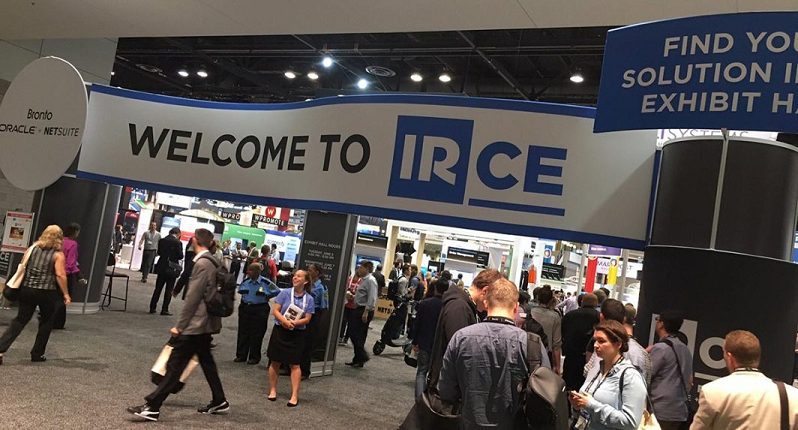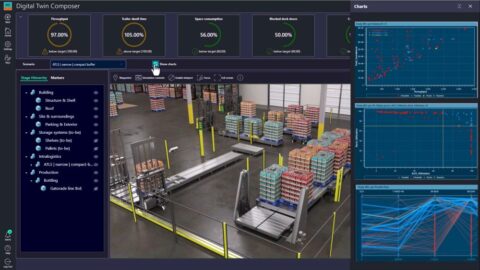The 2017 Internet Retailer Conference & Exhibition (#IRCE17) provided a snippet of the direction today’s digitally savvy retailers are headed, whether it’s through the growth of cross-border commerce, an increased willingness to sell on Amazon, or the implementation of new technologies, such as machine learning, Virtual Reality (VR) and Augmented Reality (AR).
Technology Convergence Drives AR Advancements
“We don’t know the future [of AR] yet, but it will profoundly change our day-to-day lives,” said Imran Ansani, Principal Manager of Innovation, Walmart Labs, during an IRCE session.
Now is the time for businesses to invest in AR, Ansani said, noting that “We are at an inflection point due to a convergence of technologies: chip speeds, computer vision, data connectivity, imaging and data intelligence.”
Ansani added that both AR and VR are expected to grow 200-fold within the next five years, becoming a $162 billion market by 2020, according to IDC estimates.
Current retail use cases for AR include both internal and external examples. Retailers are using AR for “product design, warehouse picking, sales & marketing and employee training,” Ansani explained.
Customer-facing examples include Disney, IKEA and Lowe’s. Disney has been testing the use of AR to allow young shoppers to see how they would look in different princess costumes. And IKEA shoppers are using AR to view virtual furniture selections in the actual setting. Lowe’s has invested in an AR-based in-store navigation app.
Cross-Border Retail Takes Center Stage
Nearly half (47%) of avid U.S. online shoppers bought items from international retailers last year, a 4% increase over 2016, according to the UPS and comScore sixth annual Pulse of the Online Shopper study, released during the event.
The top considerations that online shoppers make when purchasing from cross-border retailers include:
-
Total cost of the order, including duties and fees, clearly stated (77%);
-
All prices quoted in the shopper’s native currency (76%);
-
Products offered by a “reputable” retailer (74%); and
-
Reasonable speed of delivery (66%).
U.S. shoppers are most likely to purchase from China (61%), the UK (23%), Canada (15%), and Japan (14%), according to the UPS study.
E-Commerce Brands Warm Up To Amazon As A Sales Channel
It’s difficult to talk about the state of retail without mentioning Amazon these days, and IRCE was no exception. While still a fierce competitor for both large and small retail brands, Amazon is a valuable sales channel for many.
The Internet Retailer Top 500 Analysis Report revealed that in 2016, Amazon was responsible for:
-
40% ($4 out of every $10) spent online in the U.S.;
-
More than 66% of the growth of the U.S. e-Commerce market;
-
More than 25% of the growth in all of U.S. retail; and
-
59% of consumers looking to make their first search for a product online.
The conference also featured an “Amazon and Me” workshop for wholesalers and retailers looking to learn best practices for selling via the marketplace. Scot Wingo, Co-Founder and Executive Chairman of ChannelAdvisor, designed the session to deliver a curated mix of Amazon strategies and tactics that both beginner and advanced retailers and brands can use.
Personalization Ramps Up Via Machine Learning
In a keynote session, Miki Racine Berardelli, CEO at children’s apparel startup Kidbox, highlighted how the subscription brand has turned to machine learning to create personalized shopping experiences.
“Scientists embrace your inner artist, artists embrace your scientist,” Berardelli said. “In the middle is where magic happens for retail.”
When shoppers visit the Kidbox web site, they can fill out a style questionnaire about their child. Kidbox’s proprietary algorithm will then select the items that are included in a shopper’s box.
“We have a team of personal stylists that looks at the box that the algorithm put out, and they put the human touch on it and tweak it,” Berardelli said. “Our vision is for the data science to do 80% of the work and humans to do 20% of the work. The customer receives the box, they go into their account, they tell us what they’re returning and why, and that feeds into the algorithm, and the algorithm gets smarter so our customer stays with us.”
Retailers can learn from the Kidbox machine learning example to curate personalized experiences on their own, especially if they are building a business from the ground up.













